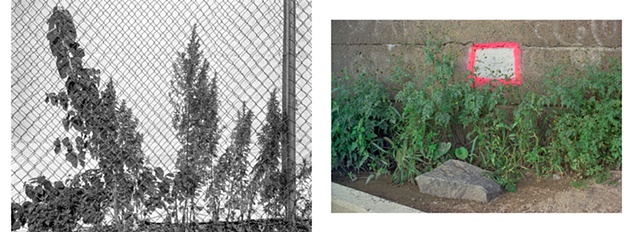
The Unexplained Spaces Marked Off
The Unexplained Spaces Marked Off
Lipani Gallery, Fordham University Lincoln Center
113 West 60th Street (SL24)
New York, New York 10023
August 3, 2012 to September 20, 2012
Closing Reception September 18, 2012 6:00 to 8:00 PM
113 West 60th Street (SL24)
New York, New York 10023
August 3, 2012 to September 20, 2012
Closing Reception September 18, 2012 6:00 to 8:00 PM
Organized by Anibal Pella-Woo and Daniel Willner
Participating Photographers:
Inbal Abergil
Tanyth Berkeley
Antonio Chirinos
Michael Chovan-Dalton
Kai McBride
Katherine McVety
Claudio Nolasco
Anibal Pella-Woo
Preston Rescigno
Dennis Santella
Daniel Willner
Johanna Wolfe
For artists of such solitary practice, photographers spend a lot of time in conversation. Most often, we speak through our work, responding to the precedent of our models and our peers, trying out new ideas or improvising on themes that have played since the beginnings of the medium. But sometimes, we actually get together and talk.
The photographers participating in The Unexplained Spaces Marked Off were all once photo students in the MFA program at Columbia University’s School of the Arts. If we did not meet there, we met through friends, and we have all found—not just that we enjoy each other’s company—but that we share a common language and a similar passion. We have each learned, in our own way, that the camera is not just a tool, but also a guide. It is a way of asking questions, of calling out and getting a response.
In his landmark book The Unofficial Countryside, Richard Mabey initiated a new natural history drawn from observations of the interface between natural and urban environments. He describes the peculiar attraction of “a town map with the unexplained spaces marked off.” A similar map might be found in the camera bag of any of these photographers. But for us, the camera itself is our atlas, charting our passage from the known to the unknown, laying out the strange terrain along this intersection.
When we return from our exploration of the new world down the block, our discoveries burned on film or written to card, we are just beginning the conversation. Now to see how these new photographs fit, how they shape themselves in context. Should we meet and share our work, we often find how closely our independent investigations align. Our own compass draws us each to the complexity of the urban landscape: to the shifting boundaries between nature and culture; to the profound mysteries of the commonplace; to the way history lays its palimpsest over the land.
This exhibit is an instance of our ongoing conversation. It is a manifestation of where we are now in our thinking about the urban landscape, what it looks like and what it means. If a common thread were drawn through the work, it might look something like Robert Frost’s first line from The Gift Outright: “The land was ours before we were the land’s.” Each photograph in its own way describes our unresolved claims to the land, our imperfect stewardship, and our struggle to acknowledge its true quality and value.